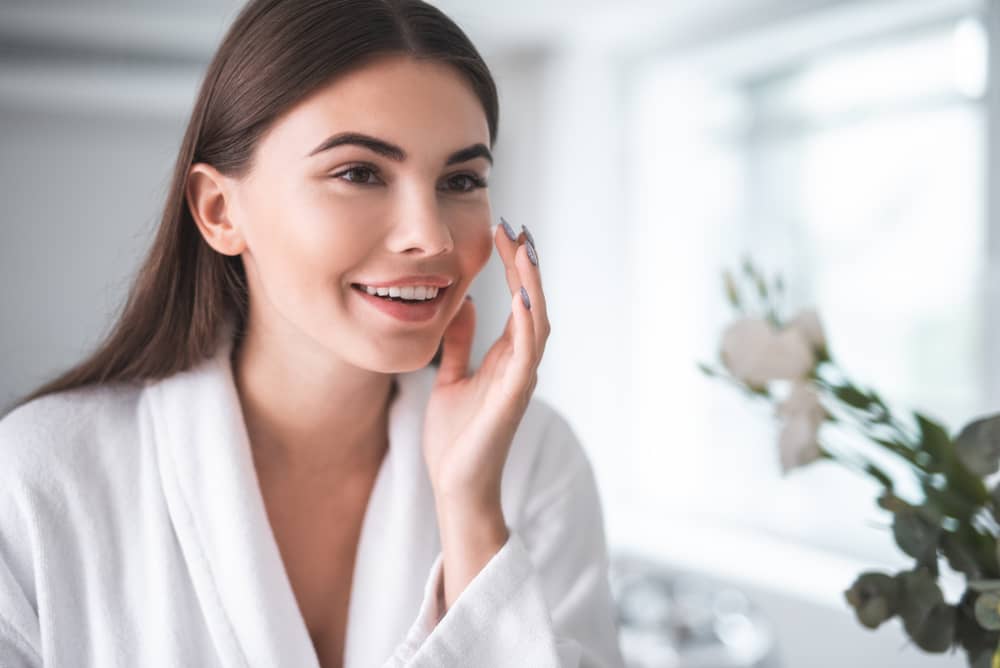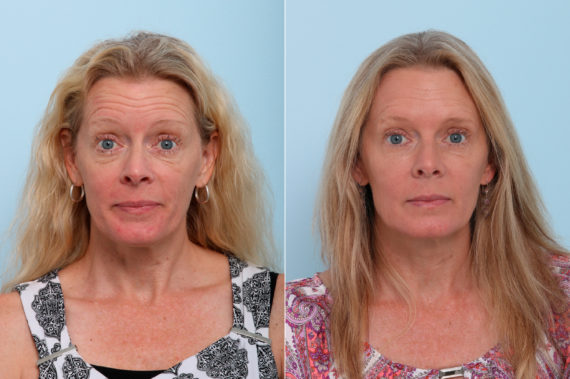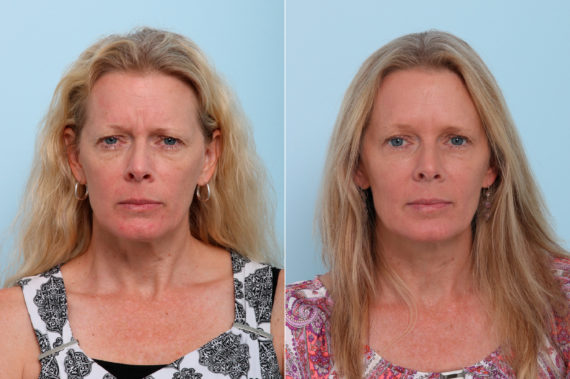Botox is a well-known treatment for wrinkles because it is effective, easily accessible, safe, and requires no downtime. Many people get regular maintenance treatments every few months because they love the results. Both men and women use Botox as a beauty staple to maintain a fresh, youthful, and confident appearance. But if you get Botox on an ongoing basis, will you eventually “train” your face to look younger?
With so many myths and facts circulating about Botox, it can be hard to know what to believe. Here’s what you need to know about long-term Botox use.

Botox and Facial Muscle Relaxation
- Botox injections can help facial muscles relax by temporarily blocking nerve signals.
- Regular Botox treatments allow muscles to remain relaxed, potentially reducing future wrinkles.
- The effects of Botox on muscle relaxation are temporary and typically last 3 to 4 months.
- Starting Botox treatments early might prevent deeper lines and wrinkles from forming as quickly.
- Consultation with a qualified professional is essential to discuss the potential benefits and risks of Botox for facial muscle relaxation.
How Botox Works
Before we look at whether or not it’s possible to train your face to reduce wrinkles by using Botox, it’s important to understand how the injections work. Botox is a neuromodulation that disrupts signals between the nerves and the facial muscles.
By disrupting this communication, Botox reduces muscle contractions that cause “dynamic” wrinkles. Dynamic wrinkles occur after years of smiling, frowning, puckering, or making other everyday facial expressions. People who get Botox injections are still able to express themselves, but frown lines, crow’s feet, and other dynamic wrinkles will relax and soften for 3-4 months at a time. One of the reasons for treatment with Botox is to maintain a youthful appearance without the need for invasive surgeries.
Can Botox Train Facial Muscles to Relax?
Since facial muscles train themselves over the years and eventually create deep dynamic wrinkles, could Botox do the opposite? Maybe. Some patients find that their Botox treatments start to last longer, or that they don’t need as much of the product for the same effects as time goes on.
Why Do Botox Effects Last Longer Over Time?
So, why does this happen? First, it’s important to realize that while Botox doesn’t “freeze” your face, it may make it harder to create the wrinkle-causing facial expressions you’ve been making for years. If you choose to continue getting the injections over a long period, then you might notice that you naturally don’t make those expressions anymore.
These factors can mean a longer-lasting reduction in facial wrinkling after using Botox for a few years. You might continue to look younger even if you stop. This can be because you have been unconsciously trained not to use certain muscles, or that those muscles are no longer as strong due to Botox use.
Effects on Facial Muscles
Over time, your muscles will become weaker with repeated Botox injections, due to lack of use. This is not necessarily something to worry about and may mean that you need less Botox to see the desired amount of wrinkle reduction.
Of course, you should always ask your provider if you have any questions or concerns about long-term Botox use. They will be able to explain the risks and benefits and make customized recommendations.
Muscles of the Face for Botox
Understanding the anatomy of facial muscles is key for effective Botox treatments, which reduce the appearance of wrinkles by relaxing specific muscles:
1. Frontalis Muscle
Responsible for horizontal forehead lines. Botox here smooths out wrinkles by stopping muscle contractions.
2. Corrugator Supercilii Muscle
Located between the eyebrows, it helps form the vertical “11s”. Botox reduces these lines by minimizing muscle activity.
3. Orbicularis Oculi Muscle
Surrounds the eye socket and is used in blinking or squinting. Targeting this muscle decreases the crow’s feet at the eye corners.
4. Procerus Muscle
A small muscle between the eyebrows that causes horizontal wrinkles. Botox in this area can lessen “bunny lines.”
5. Depressor Anguli Oris (DAO)
This muscle pulls the mouth corners downward and can be relaxed to reduce marionette lines, softening a sad or angry expression.
6. Masseter Muscle
Primarily used in chewing, targeting this muscle with Botox can reduce teeth grinding and slim the face, useful in hypertrophy cases.
Consult with a healthcare provider knowledgeable in facial anatomy for safe and effective Botox treatment, ensuring the best cosmetic results while maintaining natural expressions.
Could Other Injections Train the Face?
Unlike Botox, dermal fillers do not affect the facial muscles. As their name suggests, they “fill in” deep wrinkles and folds in the skin, restoring volume to areas of the face where it’s needed. These wrinkles are known as “static” wrinkles, and cannot be addressed with a neuromodulator like Botox or Dysport.
Some dermal fillers last longer than others. The treatment area, formula, and a patient’s metabolism are all factors in how long injectables will last. Patients who want ongoing results from fillers will need to figure out a maintenance schedule with their provider that works for them.
Limitations and Risks
Botox is commonly used to reduce the appearance of wrinkles, such as those on the forehead and around the eyes. It can temporarily make distinctive wrinkle formations less noticeable:
- Horizontal brow wrinkles
- Feet wrinkles
However, Botox does not ‘train’, for example, the corrugator supercilii muscle to relax. Once the effects wear off, normal muscle function resumes, and wrinkles, including vertical lines, may reappear.
For safe Botox use:
- Have the procedure performed by a professional knowledgeable in facial anatomy.
- Use the right technique and correct dosage to avoid uneven facial expressions.
- Discuss your medical history and concerns with the healthcare provider before treatment.
Monitor for side effects, as prompt attention to adverse effects can prevent serious complications. Informed patients can significantly benefit from Botox and minimize potential risks with proper precautions.
Should You Try Botox?
It’s important to remember that Botox is a temporary treatment. Even if you decide to keep getting the injections regularly, it’s not realistic to think that you can stop getting them and continue to enjoy the results. Some procedures are designed to last longer, but you may need surgery to get results that will last for years.
There’s no harm in trying Botox if you are curious about how it might make you look and feel. It has a proven track record of safety, and you don’t have to get another treatment if you’re unhappy with the results. However, most people end up being thrilled with the way they look and continue with treatments on an ongoing basis.
Consulting with Medical Professionals
It’s crucial to get professional advice for informed decisions, as doctors can explain the benefits and possible side effects of Botox clearly. They also verify that Botox suits your specific issues and check for any health conditions that could be affected by the treatment. Their recommendations can help you achieve a smoother facial look, which may improve comfort and self-assurance.
Thinking about using Botox to relax your facial muscles and looking for expert advice? Schedule a consultation with Mirror Mirror Beauty Boutique in Houston, TX. Our boutique is led by Dr. Paul Vitenas, who has more than 25 years of experience. We provide many aesthetic services and noninvasive procedures.
Choosing us means you get detailed care in a modern facility. Get in touch with our skilled team to see how Botox could be a good fit for you.


